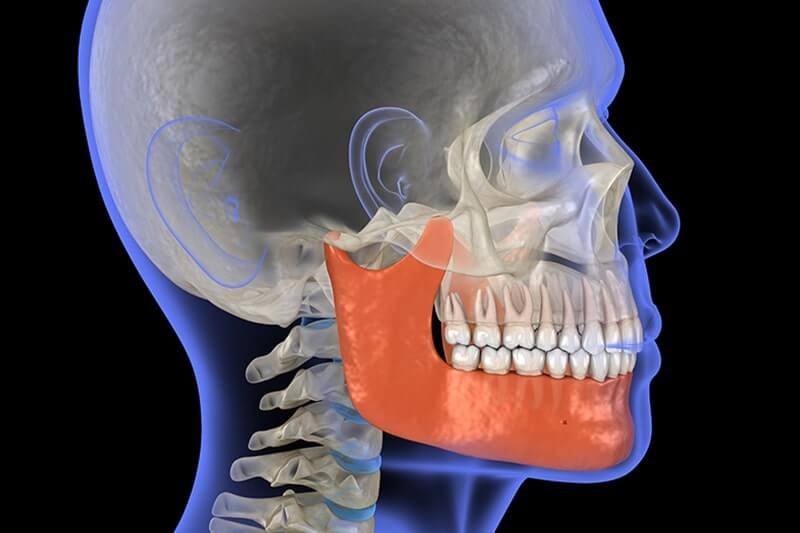Temporomandibular Joint Treatment
Chin and joint treatment is a speciality that deals with handling the problem in the joint which connects the upper chin and lower chin.

How Do Chin Discomforts Appear?
The chin joint is close to the spine in the neck and the teeth in the mouth. That’s why problem in these areas can easily affect the chin joint and it may cause complaints. An ordinary person use the chin joint almost two thousand times a day when they chewing,
swallowing, breathing, and talking. The lower chin moves with the cooperation of neck and chin muscles. The lower chin bone can move down, top, forward and side and the interruption of these movements will be a sign of disease that appears or may appear in the chin joint.
The examination is the most important diagnostic method in Chin joint discomforts. Not only a physical therapist, but also dentists, plastic surgeons, and psychiatrists must be consulted when appropriate. The issue is diagnosed after a detailed examination. However, in addition to all of these, radiological examinations such as MRI and X-ray may be needed.
What are the causes of pain in the chin joint?
- Constantly teeth grinding and squeezing
- Posture issues, especially a bended head to forward
- Disorders of the chin closure
- Dental diseases
- Using just one side of the mouth while chewing
- Psychological reasons,
- Traumas such as hard or large bites, being exposured to cold and enforcing the chin
- Looseness in general connective tissue, nail biting, chewing too much gum, eating too much seed, smoking a pipe, playing violin,
What Are The Common Complaints In Chin Joint Diseases?
- Symptoms such as tenderness and pain in the muscles in the chin area or cheeks are among the most common complaints. Usually, this pain is caused by clenched teeth.
- changes and restrictions of jaw movements can be caused by deformities of the joint anatomy and / or pain.
- joint noises occur, which are caused by the displacement of the joint disc or by excessive calcification.
- anatomical defects in the joints cause distortions in the mouth by causing defects in the opening and closing of the mouth.
- factors such as pain, change of mouth movement and unilateral chewing cause the disturbance of chewing sequence.
- inability to open the mouth may occur due to pain, changes in joint anatomy and advanced calcification.
- temporomandibular joint disorders may occur due to fatigue, pessimism and many psychological problems.
- complaints such as tinnitus, dizziness and weakness occur due to the relationship between TMJ and neck movements.
- pain can be seen radiating from the temporomandibular joint to the ear, neck, teeth, nose and eyes.
How is Temporomandibular Joint Treatment Done?
In the case of jaw joint diseases, there are a number of treatment choices. However, the most important thing is that the patient is properly informed by the doctor. Being able to use the chin joint correctly helps to prevent most of the joint diseases and to facilitate their treatment in discomfort situations. Therefore, the patient’s and doctor’s proper execution of their duties has a huge influence on the treatment’s progress. In addition to patient education, there are a few other approaches that can be used. If we list some of these methods; home program and exercise, physical therapy, medication, cold and hot therapy, injection into the joint, psychotherapy, splint and manipulation.
The details about the activities that the patient can do at home and the conditions that they should be mindful of in their everyday lives is one of the most critical aspects of the care.
One of the most effective treatment techniques for pain management, muscle relaxation, and mouth opening is physical therapy.
The purpose of injecting into the joint is to increase the lubricity of joints with low lubricity and to prevent reactions that cause joint pain.
The splint is a mouthpiece that the patient wears on his or her lower chinat night. This system is used to keep the patient’s teeth from squeezing and to provide joint clearance.
Another treatment technique used on the patient is manipulation, which is used to open the jaw lock that happens when the joint disc is displaced or to stretch the muscles to relax them.
Immediate Contact
- 0212 234 96 34
- Harbiye Mah. Abdi İpekçi Cd. No:61 Reasürans Han 2, Kat:6, 34367 Şişli/İstanbul
- Monday-Saturday: 8:30 - 19:00
